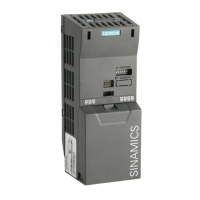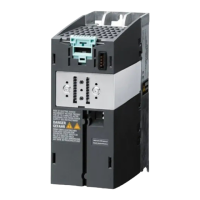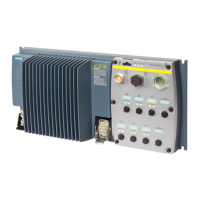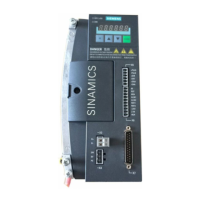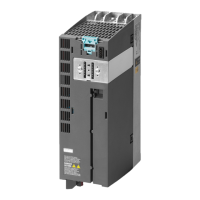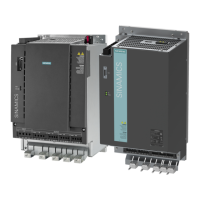Functions, monitoring, and protective functions
9.2 Drive functions
Inverter chassis units
378 Operating Instructions, 07/2016, A5E00331449A
Table 9- 1 Data determined using p1910
Permanent-magnet synchronous motor
p1910 = 1
• Stator resistance (p0350)
• Rotor resistance (p0354)
• Stator leakage inductance (p0356)
• Rotor leakage inductance (p0358)
• Magnetizing inductance (p0360)
• Drive converter valve threshold voltage (p1825)
• Converter valve interlocking times (p1828 ...
p1830)
• Stator resistance (p0350)
• Stator resistance q axis (p0356)
• Stator inductance d axis (p0357)
• Drive converter valve threshold voltage
(p1825)
•
Converter valve interlocking times (p1828 ...
p1830)
p1910 = 3
• Saturation characteristics (p0362 ... p0366)
not recommended
Notice: When encoder adjustment is complete,
the motor is automatically rotated approx. one
revolution in order to determine the zero marker
of the encoder.
Since the type plate data provides the initialization values for identification, you must ensure
that it is entered correctly and consistently (taking into account the connection type
(star/delta)) so that the above data can be determined.
It is advisable to enter the motor supply cable resistance (p0352) before the standstill
measurement (p1910) is performed, so that it can be subtracted from the total measured
resistance when the stator resistance is calculated (p0350).
Entering the cable resistance improves the accuracy of thermal resistance adaptation,
particularly when long supply cables are used. This governs behavior at low speeds,
particularly during encoderless vector control.
Figure 9-1 Equivalent circuit diagram for induction motor and cable
If an output filter (see p0230) or series inductance (p0353) is used, its data must also be
entered before the standstill measurement is carried out.
The inductance value is then subtracted from the total measured value of the leakage. With
sine-wave filters, only the stator resistance, valve threshold voltage, and valve interlocking
time are measured.
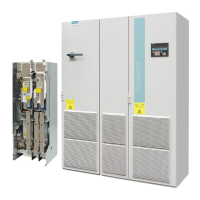
